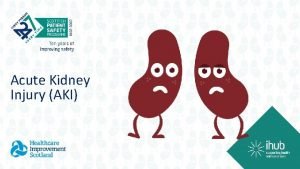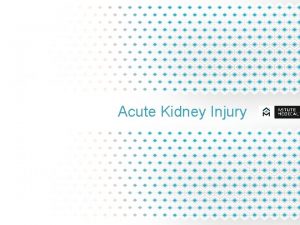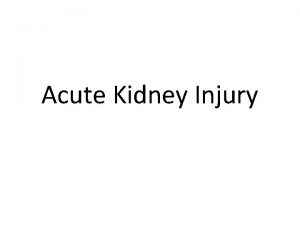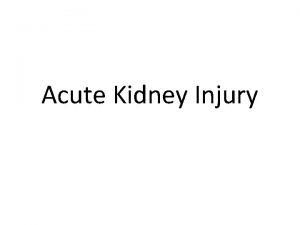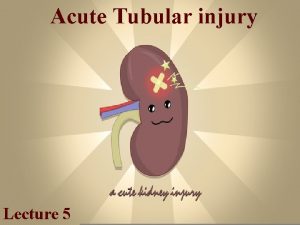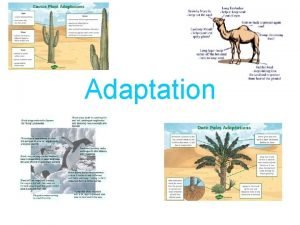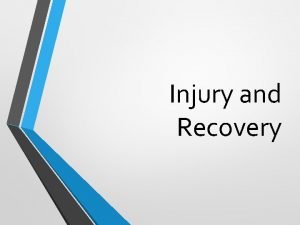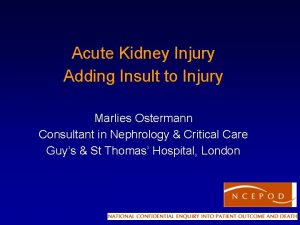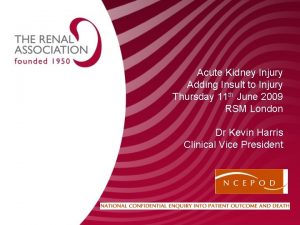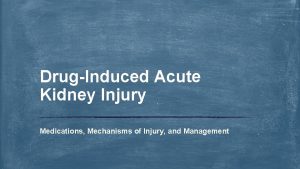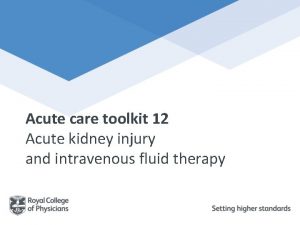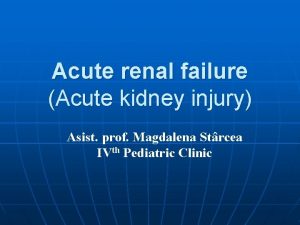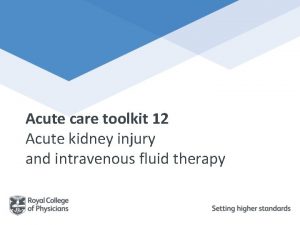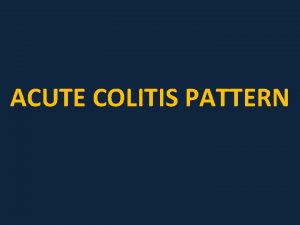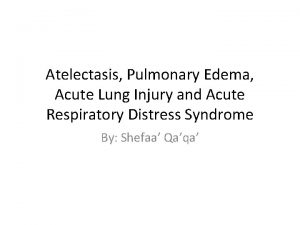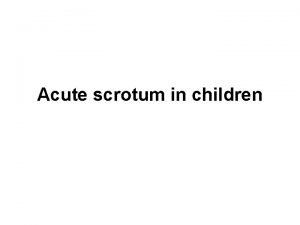Investigation of the livers adaptation to acute injury












![What is mathematical modeling? Blood influx [metabolites] Liver Blood efflux V(t) [metabolites] compare Blood What is mathematical modeling? Blood influx [metabolites] Liver Blood efflux V(t) [metabolites] compare Blood](https://slidetodoc.com/presentation_image_h/17062f435847d46090f45f82a58215ce/image-13.jpg)















- Slides: 28

Investigation of the liver's adaptation to acute injury using multi-scale mathematical modeling Géraldine Celliere

MAMBA team Ø Modeling and Analysis for Medical and Biological Applications Ø Led by Marie Doumic-Jauffret Ø Joint with UPMC Ø At Inria, focuses on: – mathematical modeling of biological tissues (liver, tumors) => Mainly Dirk Drasdo – Protein aggregation in amyloid diseases => Mainly Marie Doumic-Jauffret

The liver has a number of key functions

The liver has a number of key functions Ø Production of bile to help digestion Ø Carbohydrate, lipid and protein metabolism (storage or release of glucose, cholesterol, vitamins depending on the need) Ø Detoxification of toxins (pollutants) and drugs Ø Detoxification of ammonia (NH 4+)

The liver is also subjected to diseases Infections such as Hepatitis Cancer Steatosis (accumulation of fat droplets) Cirrhosis (accumulation of scar tissue, mainly due to alcoholism) Ø Drug damage (mainly due to paracetamol overdose) Ø Ø

The liver is also subjected to diseases but can regenerate Infections such as Hepatitis Cancer Steatosis (accumulation of fat droplets) Cirrhosis (accumulation of scar tissue, mainly due to alcoholism) Ø Drug damage (mainly due to paracetamol overdose) Ø Ø

Ammonia is involved in life-threatening complications Ø NH 4 enters the blood in the intestine. The blood continues to the liver, where ammonia is metabolized Ø In case of NH 4 detoxification impairment, hepatic encephalopathy can occur Ø Current treatments of hyperammonemia perform poorly Ø The main cause of acute liver failure is paracetamol (acetaminophen) overdose

Question How is ammonia metabolism modified in the liver in case of acute damage ? Integrated metabolic spatial-temporal model for the prediction of ammonia detoxification during liver damage and regeneration, Hepathology (2014) Schliess S. , Hoehme S. , Henkel S. G. , Ghallab A. , Driesch D. , Böttger J. , Guthke R. , Pfaff M. , Hengstler J. G. , Gebhart R. , Häussinger D. , Drasdo D. , Zellmer S.

The liver has a complex architecture

Zonation of metabolic functions Ammonia detoxified through the urea cycle - High capacity, low affinity Ammonia detoxified through glutamine synthetase - Low capacity, high affinity No drug detoxification Drug detoxification

Mechanisms of paracetamol toxicity Non-toxic compound Paracetamol/CCl 4 Secreted outside through the bile

Mechanisms of paracetamol toxicity on i t a r Satu Non-toxic compound Secreted outside through the bile Paracetamol/CCl 4 Toxic compound Cell death
![What is mathematical modeling Blood influx metabolites Liver Blood efflux Vt metabolites compare Blood What is mathematical modeling? Blood influx [metabolites] Liver Blood efflux V(t) [metabolites] compare Blood](https://slidetodoc.com/presentation_image_h/17062f435847d46090f45f82a58215ce/image-13.jpg)
What is mathematical modeling? Blood influx [metabolites] Liver Blood efflux V(t) [metabolites] compare Blood influx Blood efflux [metabolites] V(t)

Step 1: build a model of NH 4 detoxification

Step 2: Calibration of the metabolic model with data of healthy livers Good agreement

Step 3: Simulate the classical scheme in case of liver damage Will we be able to reproduce the measured metabolites concentrations in the case of a damage if we assume that the reaction are the same but part of the liver is destroyed (changed volumes) ?

Step 3: Simulate the classical scheme in case of liver damage

Step 3: Simulate the classical scheme in case of liver damage There is something missing in the model …

Step 4: Asking the experimentalists

Step 4: Asking the experimentalists Glutamate + NADP+ GDH + NH 4 + α-KG + NADPH

Step 5: Adding the GDH reaction to the model Cellular Periportal Gln Glu Cellular Pericentral endo GLNase GDH a. KG NH 4 Glu a. KG GDH GS NH 4 CPS Urea Gln Ø Will the new model be able to reproduce both the data from the healthy case and from the drug-induced damage case ? Ø What will be the direction of GDH over time in the damaged case ?

Step 5: Adding the GDH reaction to the model – Open questions Cellular Periportal Gln Glu Cellular Pericentral endo GLNase GDH a. KG NH 4 Glu a. KG GDH GS CPS Urea Ø How to deal with “boundary conditions” ? Ø When is a match between model and data good enough ? Gln NH 4

Why is modeling useful? 1. Putting together a coherent picture of an entire system – organizing the knowledge

Why is modeling useful? 2. Testing the plausibility of hypotheses How does the liver regenerate ? a) Cells proliferate b) Cells proliferate + migrate towards center c) Cells proliferate + migrate towards center + cell division is aligned along the blood vessels With modeling we could show that hypotheses a) and b) are not possible.

Why is modeling useful? 3. Guiding new experiments

Why is modeling useful? 4. Explore situations that are unreachable or too costly for experiments Extrapolation from animal to human and from in vitro to in vivo

Conclusion Ø The classical ammonia detoxification scheme cannot explain the observations during liver damage Ø GDH might be an important enzyme in this process Ø Modeling can really help in biology Ø Perspective: investigate the influence of the spatial geometry by replacing the compartment model by a spatially resolved model

Acknowledgement Dirk Drasdo Group: - Stefan Hoehme - Tim Johann - Adrian Friebel - Johannes Neitsch - Paul van Liedekerke - Yi Yin - Noemie Boissier - Margriet Palm - Francois Bertaux Jan Hengstler Group: - Marc Brulport - Alexander Bauer - Ahmed Ghallab Geraldine Cellière (geraldine. celliere@inria. fr) Sebastian Zellmer Dieter Ha ussinger Rolf Gebhardt Michael Pfaff Reinhard Guthke Jan Bo ttger Dominik Driesch Sebastian Henkel Freimut Schliess
 Intentional and unintentional injury
Intentional and unintentional injury Acute kidney injury
Acute kidney injury Bổ thể
Bổ thể Quá trình desamine hóa có thể tạo ra
Quá trình desamine hóa có thể tạo ra Khi nào hổ con có thể sống độc lập
Khi nào hổ con có thể sống độc lập Dot
Dot Biện pháp chống mỏi cơ
Biện pháp chống mỏi cơ Bài hát chúa yêu trần thế alleluia
Bài hát chúa yêu trần thế alleluia độ dài liên kết
độ dài liên kết Thiếu nhi thế giới liên hoan
Thiếu nhi thế giới liên hoan điện thế nghỉ
điện thế nghỉ Công của trọng lực
Công của trọng lực Tia chieu sa te
Tia chieu sa te Tỉ lệ cơ thể trẻ em
Tỉ lệ cơ thể trẻ em Một số thể thơ truyền thống
Một số thể thơ truyền thống Sơ đồ cơ thể người
Sơ đồ cơ thể người Số nguyên tố là
Số nguyên tố là đặc điểm cơ thể của người tối cổ
đặc điểm cơ thể của người tối cổ Các môn thể thao bắt đầu bằng tiếng đua
Các môn thể thao bắt đầu bằng tiếng đua Hát kết hợp bộ gõ cơ thể
Hát kết hợp bộ gõ cơ thể Các châu lục và đại dương trên thế giới
Các châu lục và đại dương trên thế giới ưu thế lai là gì
ưu thế lai là gì Tư thế ngồi viết
Tư thế ngồi viết Trời xanh đây là của chúng ta thể thơ
Trời xanh đây là của chúng ta thể thơ Thẻ vin
Thẻ vin Cái miệng bé xinh thế chỉ nói điều hay thôi
Cái miệng bé xinh thế chỉ nói điều hay thôi Chó sói
Chó sói Từ ngữ thể hiện lòng nhân hậu
Từ ngữ thể hiện lòng nhân hậu Tư thế ngồi viết
Tư thế ngồi viết

